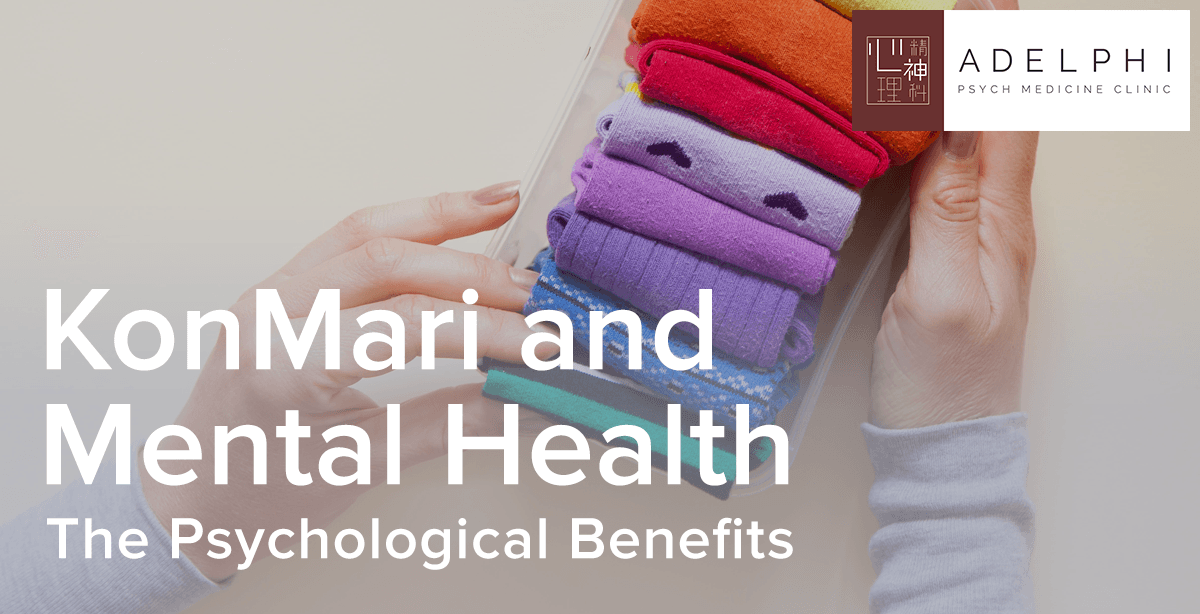
Have you ever watched one of the many shows on television about people whose hoarding has got out of hand? It’s probable that you sat back smugly, surveyed your living space, and thought to yourself you’ve got everything under control. But do you?
While you might not be a hoarder, you may be a clutter culprit. And your clutter has a negative impact on your mental health. You might not think this is possible, but it is. A psychologist will tell you that your clutter makes you unhappy even if you don’t think it does.
Marie Kondo is the darling of decluttering. Her books and current Netflix show have got even the worst clutter offenders enthusiastically reorganizing the spaces around them. The KonMari method has got social media abuzz with its effective approach to decluttering.
Marie Kondo is the author of a 2011 New York Times Bestseller called The Life-Changing Magic of Tidying Up: The Japanese Art of Decluttering and Organizing.
The book has been translated into several languages and published in more than 30 countries.
What is the KonMari method all about?
The standard and most prominent feature of the KonMari method is a simple three letter word: joy. The method focuses on looking at the things around you and seeking the ones that make you happy. Followers identify which things give them joy. This feeling helps them determine what stays and what goes.
What are the basics of the KonMari method?
- How you store clothes in drawers
Most of us have our clothes folded in half in haphazard piles. When you go to remove something from the bottom of the pile, the top is disturbed. This leaves you with yet another tidying task to add to your list. Instead of piles, the KonMari method offers a very different yet highly effective approach.
All items are folded into a small square approximately one-third of its overall area. The items are stored upright in the drawer, one behind the other. This approach allows you to quickly and easily see what’s in the drawer and access it without interfering with other items.
- Take stock
Following the KonMari method, you need to make a list of what you have. This needn’t be a written list as a mental list will do just as well. Take all your clothes out of the closet and put them on your bed. Yes, that means everything!
Do the same with books, electrical appliances, kitchen utensils, DVDs, etc. Seeing what you have in each category will show you that you have more than you think you do. It shows you that you don’t really need some of the things you’ve thought about buying.
- Stick to the order
The method prescribes starting with possessions such as clothes, books, and DVDs. They present a more black and white decision-making process. Follow these items up with papers.
Destroy whatever is not needed. After that, you can move into the different rooms in your house such as the kitchen and bathroom. Work on miscellaneous items and finish off with sentimental items.
- Find the joy
Take each item in the category you’re working with and ask yourself if it makes you happy. If it brings you joy, you should keep it. Don’t allow your practical side to interfere with the process.
When you are finished with each category of possessions you should feel more surrounded by items that bring you joy than you were before. In the fight against depression, Singapore mental health professionals have identified reclaiming your joy is an essential step to recovery.
- Determine a place for everything
No item in your home should be ‘homeless’. Everything should have a place to call home. When everything in your living space has a place in which it belongs, it’s easy to tidy up. This principle of the method also allows you to find things with ease.
After all, if you know where it stays and you’ve put it there, you can find it every time. Have a place to store for things like paperwork, keys, small change, and TV remote. You’ll be surprised at the effect!
- Show gratitude for your belongings
Kondo takes the time to reflect on her home and the possessions in it and what they have given her. This is her way of showing her appreciation for what she has. When letting go of items, she silently thanks the possession for what it did for her. This process makes it easier to let possessions go.
- Stay in your lane
It is impossible to apply the KonMari method to someone else’s possessions. You cannot know if the item brings them joy or not. The best approach is to apply the method to your own possessions and lead the way for the other members of your household.
Can the KonMari method really make me feel better about myself?
In a word, yes. Here are some reasons why:
- A lack of clutter helps you to remain focused on what is important.
- Too much clutter overstimulates your brain. This inhibits cognitive functioning such as being able to plan, remember, and concentrate.
- Clutter causes dirt and other problems like mildew and mold. It was shown by a study on hoarding that home cleanliness is linked to fewer cases of depression.
- Energy levels are increased when clutter is eliminated.
The effect of the KonMari method can be felt far beyond your possessions. Seeing how well it works, you can apply it to other aspects of your life. The method can help you reduce anxiety and reevaluate your career and relationships.
Ask yourself, “Does it bring me joy?” If it doesn’t, you know what to do. It’s either time to work on fixing the problem, or it’s time to let it go completely, no matter how hard it might be.
Beyond Decluttering
Decluttering your workstation in the office and cleaning up the house has both physical and mental benefits. If you or someone in your family do not feel an urge to declutter or if you think you are beyond clutter and has gone into the realm of hoarding, it could be a symptom of a mental health issue. Visit the our psychiatrist in Singapore at Adelphi Psych Medical Clinic for the right intervention. Contact us here.
Article by Adelphi Psych Medicine Clinic


